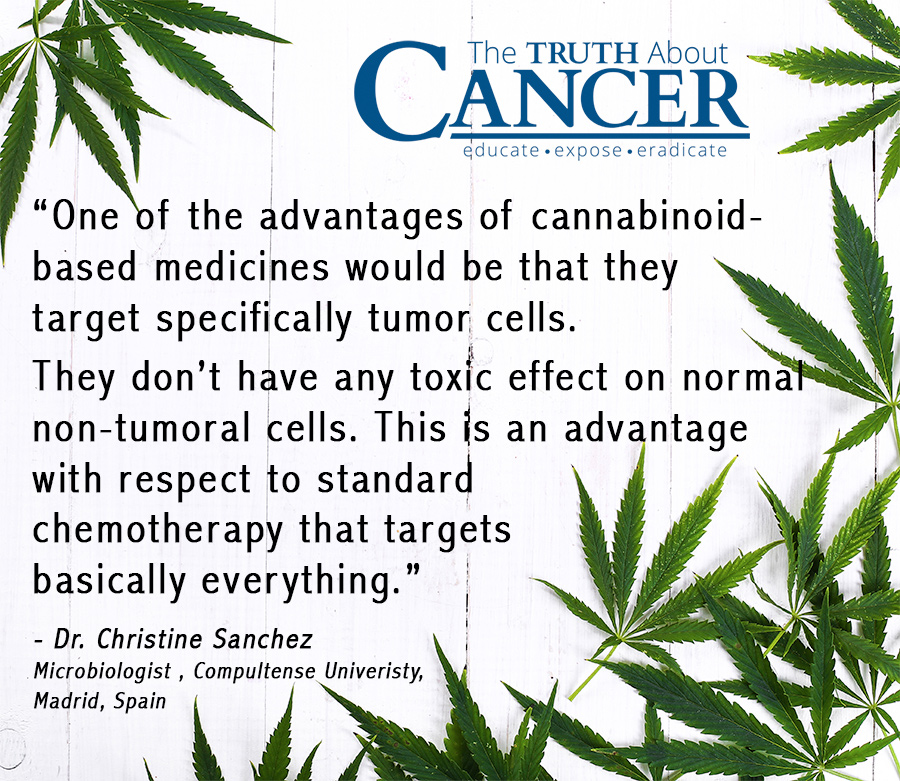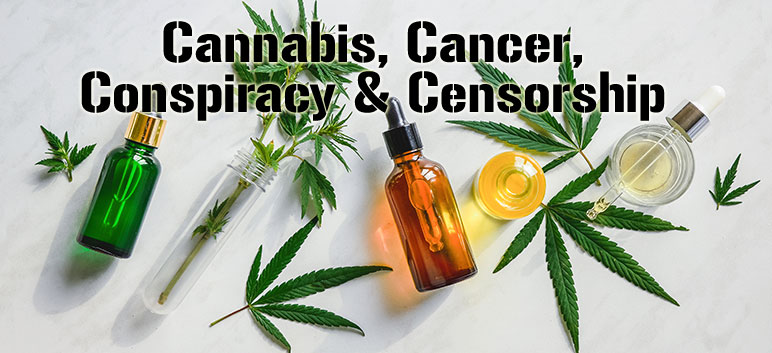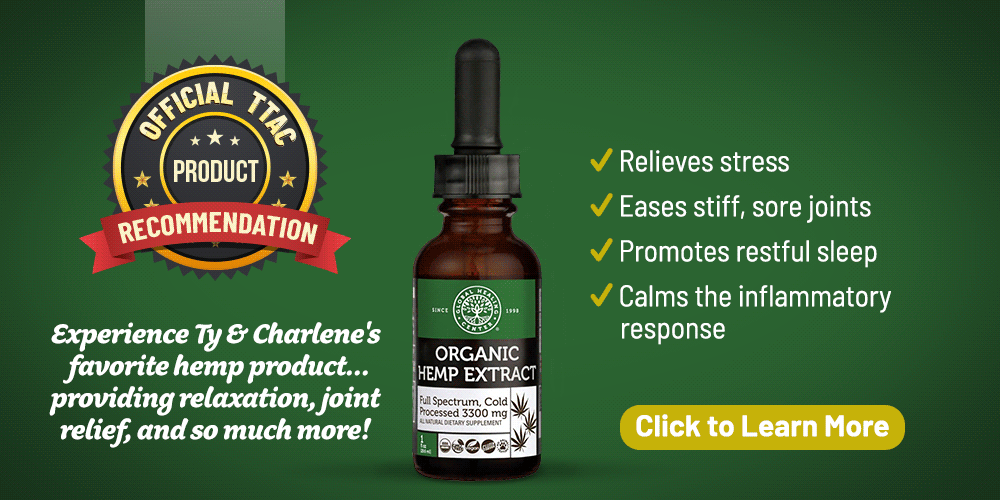Tuesday, June 23, 2020
BASHEER AHMAD,
Happy Tuesday! We hope you get a chance to go outside today. See friends and family.
Give them a big hug! Shake hands!
Friends and family are not the enemy! A virus is not the enemy!
FEAR is the enemy!
Speaking of FEAR….
Have you ever seen the propaganda film, “Reefer Madness”?
This was a propaganda film that debuted in 1936 that helped fuel hysteria and fear concerning cannabis.
The cannabis plant (also known as the hemp plant) has been used in just about every culture for centuries. In fact, cannabis is included in the 50 fundamental herbs within the cornucopia of Traditional Chinese Medicine. It has been cited in ancient texts as having a healing effect on over 100 ailments. In recent years in the United States, the collective mood is changing in regards to cannabis/hemp (aka “marijuana”).
Personally, we prefer to use the term “hemp” or “cannabis” since those are proper names for the plant, and the truth is that the term “marijuana” (derived from the Mexican slang “marihuana”) was popularized in the early 1930s by the Federal Bureau of Narcotics (which later became the DEA) in order to make this amazing plant sound sinister and to elude the public’s existing familiarity and comfort level with the plant and the medical application of cannabis/hemp tinctures.
“Marijuana” was not a commonly smoked recreational drug at the time.
The cannabis plant (also known as the hemp plant) has been used in just about every culture for centuries. In fact, cannabis is included in the 50 fundamental herbs within the cornucopia of Traditional Chinese Medicine. It has been cited in ancient texts as having a healing effect
on over 100 ailments. In recent years in the United States, the collective mood is changing in regards to cannabis/hemp (aka “marijuana”).
Personally, I prefer to use the term “hemp” or “cannabis” since those
are proper names for the plant, and the truth is that the term
“marijuana” (derived from the Mexican slang “marihuana”) was popularized
in the early 1930s by the Federal Bureau of Narcotics (which later
became the DEA) in order to make this amazing plant sound sinister and
to elude the public’s existing familiarity and comfort level with the
plant and the medical application of cannabis/hemp tinctures.
“Marijuana” was not a commonly smoked recreational drug at the time.
Currently there are over 3 dozen states where it is legal for
patients to use “marijuana” for medical purposes. Pending federal
legislation may open up opportunities for federally-funded medical
research, including human clinical trials. This will further prove
cannabis’ track-record when it comes to healing a number of disease
conditions − including cancer.
Cannabis and The Endocannabinoid System
In the mid-1990s, renowned Israeli researcher Dr. Ralph Mechaoulam,
professor of Medicinal Chemistry at Hebrew University in Jerusalem, made
an exciting discovery that would forever change how we look at our
biological relationship to plant medicine. Dr. Mechaoulam discovered a subtle system within the body that seemed to have a balancing effect on every other system. He called it the Endocannabinoid (EC) System and it can be found in all mammals, including humans.
The EC system consists of a series of molecular receptors that are
designed to receive cannabinoids. In particular this includes
cannabidiol (CBD) and tetrahydrocannabinol (THC) as well as other
related substances such as cannabigerol (CBG) and cannabinol (CBN).
Prior research in the 1980s led Mechaoulam and others to pinpoint two
main receptors for cannabinoids − cannabinoid 1 (CB1) and cannabinoid 2
(CB2). Researchers at the time also defined the natural substances
called endocannabinoids, which our body produces on its own in a similar way it produces endorphins. Phytocannabinoids (namely THC, CBD, and their variants), on the other hand, come directly from the cannabis plant.
Cannabinoid receptors CB1 and CB2 are designed by the body to be
specific targets for THC, while our natural endocannabinoids help to
synthesize it. The process of THC-cannabinoid receptor binding and what
this does for the body is what researchers have been studying for over
two decades. They are doing this in order to find out exactly how
cannabis works in healing cancer.
Microbiologist Dr. Christine Sanchez of Compultense Univeristy in
Madrid, Spain has been studying cannabinoids and cancer since the early
2000s. She was the first to discover the antitumor effects of cannabinoids.
“We now know that the endocannabinoid system regulates a lot of
biological functions such as appetite, food intake, motor function,
reproduction and many others and that is why the plant has such a wide
therapeutic potential,” says Dr. Sanchez in a video interview for the web-based cable channel Cannabis Planet.
Cannabis and Cancer Tumor Growth
“We observed that when we treated [astrocytoma, a type of brain
tumor] cells with cannabinoids, the THC…was killing the cells in our
Petri dishes,” Dr. Sanchez says. “We…decided to analyze these
components in animal models of breast and brain tumors. The results we
are obtaining are telling us that cannabinoids may be useful for the
treatment of Breast Cancer.”
Sanchez and other researchers have confirmed that the most
potent effects against tumor growth occur when THC and CBD are combined.
Cannabidiol, or CBD, which does not have a psychoactive effect, has
long been known as a potent anti-cancer agent. This is because of its
ability to interfere with cellular communication in tumors as well as in
its ability to instigate apoptosis, or programmed cancer cell death.
Some research studies, including in vitro and animal-based
trials conducted by San Francisco-based researchers at the California
Pacific Medical Center, have also shown that CBD may affect genes
involved in aggressive metastasis. It does this by helping to shut down
cellular growth receptors.

Δ9-Tetrahydrocannabinol (i.e. THC), the psychoactive counterpart to
CBD, has been shown to reduce tumor growth as well. It has also shown to
have an effect on the rate of metastasis, including for non-small cell lung cancer −
the leading cause of cancer deaths globally. A 2007 study on THC and
highly-aggressive epidermal growth factor receptor-overexpressing
(EGF-expressing) lung cancer
conducted by Harvard Medical School found that certain EGF lung cancer
cells express CB1 and CB2 cannabinoid receptors. They found that the
presence of THC effected metastasis of these cells by reducing the “focal adhesion complex,” which plays a vital role in cancer migration.
Studies have also been conducted on the combined effect of CBD and THC on lung, prostate, colon, pancreatic, liver, bladder, cervical, blood-based, brain, and other forms of cancer. These
studies lend increasing evidence to the fact that cannabinoids are not
only antioxidant phytonutrients but powerful “herbal chemo” agents.
Says Dr. Sanchez: “One of the advantages of cannabinoid-based
medicines would be that they target specifically tumor cells. They don’t
have any toxic effect on normal non-tumoral cells. This is an advantage
with respect to standard chemotherapy that targets basically
everything.”
If You Use Cannabis for Cancer, Do it Right
Because cannabinoid therapy is relatively new in the mainstream, a
current challenge for patients regarding its use is lack of regulation.
This may change, however, with the possible passing of the Compassionate
Access, Research Expansion, and Respect States (CARERS) Act, which has
the support of 37 members of Congress.
CARERS would remove “marijuana” from the Controlled Substances Act
Schedule I drug category, where it has been since 1970 − on par with
heroin and cocaine. This classification is ridiculous since, by
definition, Schedule I drugs have “no currently accepted medical uses” and the Department of Health and Human Services (HHS) holds a patent (U.S. Patent 6630507) on cannabis oil for medical use!

Think about it. How can HHS hold a medical use patent for cannabis oil if there are no medical uses for cannabis? OK, enough of the logic lesson. Let’s just say that there are some serious logic deficiencies in these laws.
If “marijuana” is rightfully removed from a Schedule I drug, this
would open the door for more targeted, federally-funded research as well
as increased patient access to this amazing healing plant.
In the meantime, if you are on a cancer-healing path and are
considering using cannabinoids, here are some general guidelines that
experts agree are worth considering:
- Do your own research. The best way to learn about
the power of cannabis in healing cancer is to start digging. There are
approximately 500 articles on Pubmed alone relating to cannabis and
cancer. Learn about strains, qualified targeted research studies, what
method of administration may be right for you, and the importance of
balancing the Endocannabinoid System.
- Know your source. Unfortunately, because the
medical cannabis industry is largely unregulated, charlatans selling
bogus products definitely exist. You should not have to pay exorbitant
amounts of money for any cannabis product that you buy from regulated
pharmacies or online. Also, make quality a priority for you. Be sure that your product comes from an organic source and that you know that the plant has not been grown or processed using pesticides.
- Stick with natural cannabis products.
Synthetically-produced cannabinoids such as Marinol are commercially
available. However, anecdotal evidence has found that these do not work
as efficiently as natural substances do.
- Work with a professional healthcare provider trained in cannabinoid therapy.
These professionals are out there in increasing numbers, especially in
states where the medical cannabis industry is well established or
growing, such as California and Colorado. Reach out to a patient
advocate group online if no qualified professionals are in your area.
- Make cannabis therapy an important part of your overall cancer-healing toolbox.
A well-rounded naturally-based cancer healing protocol involves working
with the body’s own healing mechanisms through a variety of means. For
you, this may mean changes to your diet and lifestyle, reducing stress,
getting quality sleep, moving your body, intense detoxing protocols, and using other supplements and proven natural methods in addition to the powerful healing power of cannabis.
This information is being suppressed from you by the mainstream
media and the medical establishment. Be notified each week when
cutting-edge articles are added by clicking here. You’ll be glad you did.
Editor’s Note: This article was initially published in September 2016 and has been updated in June 2020.
The hemp revolution is here! The hemp
plant is loaded with beneficial cannabinoids that calm the mind and
promote homeostasis (balance) throughout the body.
Article Summary
- The cannabis plant has been used in just about every
culture for centuries and has been cited in ancient texts as having a
healing effect on over 100 ailments.
- Currently there are 25 states where it is legal for patients to
use “marijuana” for medical purposes. Pending legislation may open up
opportunities for federally-funded medical research, including human
clinical trials.
- In the mid-1990s, an Israeli researcher discovered a subtle
system within the body that seemed to have a balancing effect on every
other system. He called it the Endocannabinoid (EC) System.
- The EC system consists of a series of molecular receptors that
are designed to receive cannabinoids. Our bodies produce some
cannabinoids. Others come directly from the cannabis plant.
- Spanish microbiologist Dr. Christine Sanchez was the first to
discover the antitumor effects of cannabinoids. Cannabidiol, or CBD,
which does not have a psychoactive effect, has long been known as a
potent anti-cancer agent because of its ability to interfere with
cellular communication in tumors as well as in its ability to instigate
apoptosis (programmed cancer cell death).
- THC (the psychoactive counterpart to CBD) has been shown to
reduce tumor growth as well. Studies have been conducted on the combined
effect of CBD and THC on a number of types of cancer. These studies are
showing evidence of cannabinoids being powerful “herbal chemo” agents.
- If you have cancer and are considering using cannabinoids, here
are some general guidelines that experts agree are worth considering:
- Do your own research
- Know your source
- Stick with natural cannabinoid products over synthetic
- Work with a professional healthcare provider trained in cannabinoid therapy
- Work with your body’s own healing mechanisms through a variety of means
According to the FDA, at least 100,000 Americans die each year from the on-label use of prescription drugs.
If you want to compare cannabis to the $300 billion drug industry, then let’s try to find the deaths from cannabis overdoses.
(tick tock, tick tock)
There aren’t any….
Please help us spread the truth. Together, we will win this fight to maintain our freedom! ;-)
Yours in health and liberty,
FYI, our mission actually began EXACTLY 25 years ago today, on June 23, 1995, when we met. So today is our "silver jubilee." ;-)
Here’s a photo taken in June 1995.
Ty & Charlene Bollinger
We met in June of 1995 in San Antonio, Texas.
We fell in love immediately and were engaged in 9 days.
Six months later in December of 1995 we were married.
Six months later, Ty’s Dad was diagnosed with cancer, he died 25 days later, and the rest is history...
|




























No comments:
Post a Comment